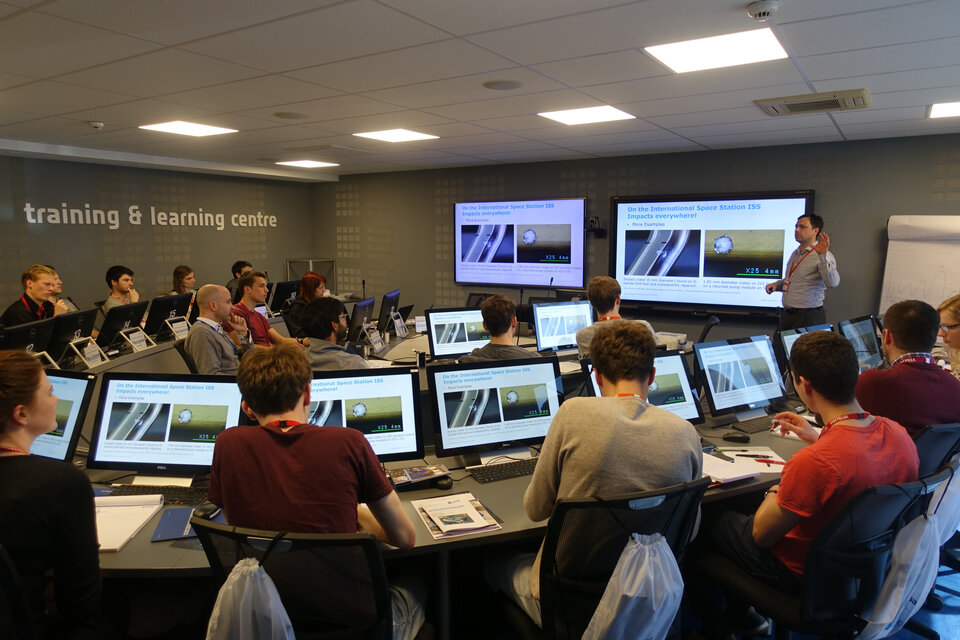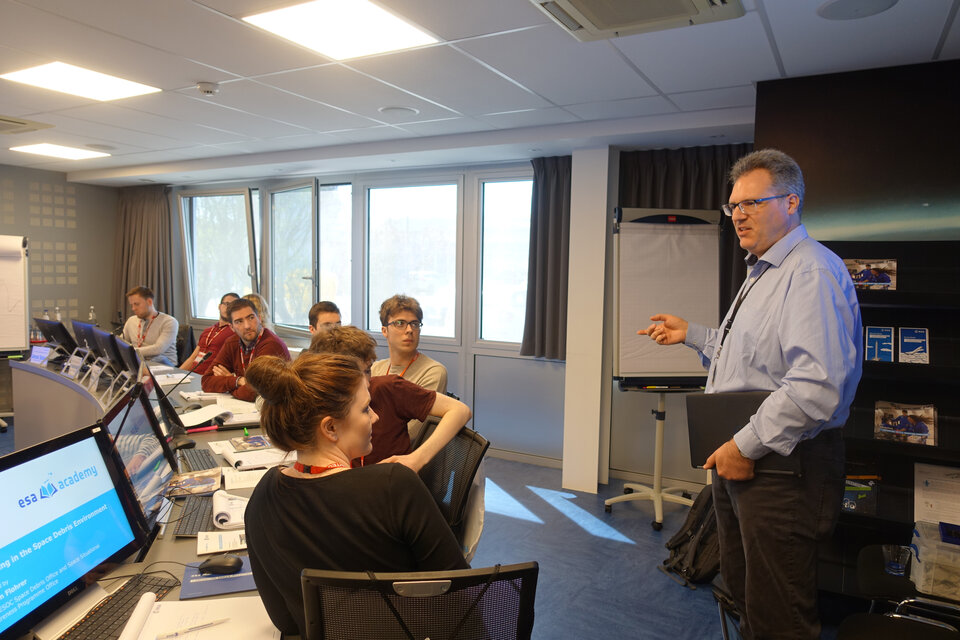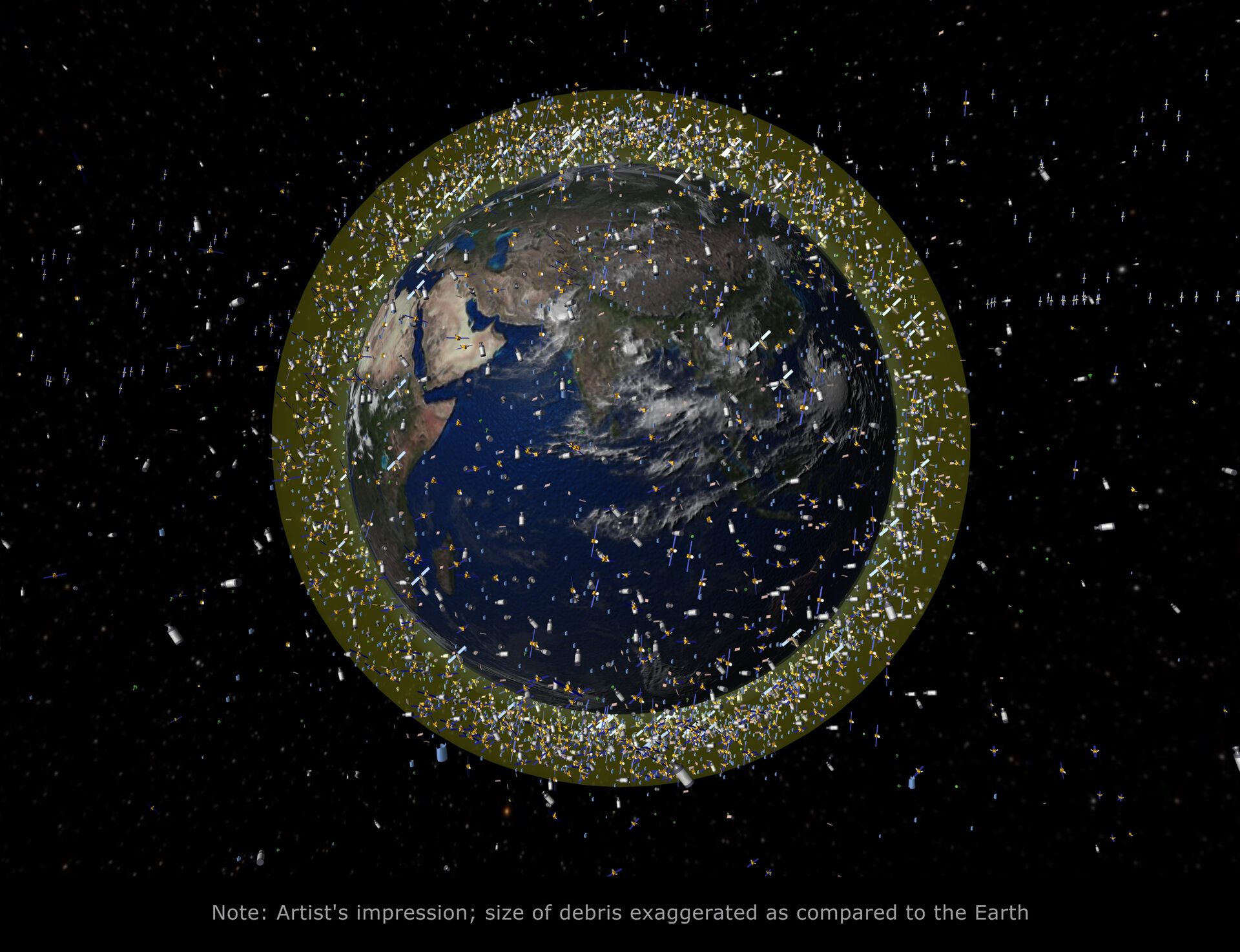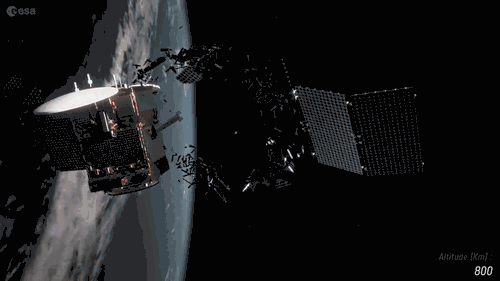Challenges of space debris tackled by university students in pioneering new course
ESA’s Education and Space Debris Offices have combined forces to pilot a new and innovative educational experience: the Space Debris Training Course 2018. The goal was to introduce university students to the growing problem of space debris, and what can be done about it.
Hosted at ESA Academy’s Training and Learning Centre, ESA-ESEC, Belgium, this first-of-its-kind educational course ran from 16 – 20 April 2018, and was delivered by ESA experts from ESOC and ESTEC, and by external specialists. Participating were 22 university students with an engineering or physics background, from 13 different ESA Member and Associate States.
This five-day course was delivered through an exciting combination of lectures, along with hands-on exercises based on ESEO (European Student Earth Orbiter). ESEO is an ESA Education small satellite that carries a drag-augmentation device as part of its student-designed payload. The hands-on activities also made good use of Debris Risk Assessment and Mitigation Analysis (DRAMA) and Meteoroid and Space Debris Terrestrial Environment Reference (MASTER) software, developed and utilised by the Space Debris Office.

One of the participants was a German student from RWTH Aachen University. He explained, “I really enjoyed the professional presentations and the fantastic group dynamic. Especially being able to talk to the lecturers at each meal and in the evening was a new experience for me. We learnt a lot during this one week and I am glad that I have been there.”
The first day provided an overview of space debris: what it is composed of, the danger it poses, then mitigation principles and guidelines used to deal with it. An ESA legal expert also gave a lesson via videoconference from the UN about the legal and regulatory aspects of space debris. “I learnt just as much from the presentations as I did from conversations with the passionate lecturers involved,” said a Norwegian student from the Polytechnic University of Catalonia. “The quality of the material provided was beyond already high expectations. I strongly recommend applying to ESA Academy courses, as they will undoubtedly leave an indelible mark in your mind."
Day two saw the students delve deeper into the importance of mitigation, from the basic forces that act on a space object, to technologies for passivation and deorbiting.

The third day was centred on operations, and how space debris influences the day-to-day working of satellites. The students were also given an introduction to space surveillance, collision avoidance, and finally, protection and shielding.
Day four was dedicated to re-entry of space debris, from aerothermodynamics and simulations, to spacecraft specifically designed to melt up during re-entry. On-ground risk due to re-entry and active debris removal were also considered.
The fifth and final day was about the future of the space debris environment. Hands-on exercises taught students about Active Debris Removal, challenging them to quickly design a debris removal mission and to estimate the on-ground risk during re-entry. Students also had the opportunity to visit ESA’s space Security and Education Centre (ESEC) and the PROBA mission control centre, which was a highlight for many!
That afternoon the participants were evaluated through an online questionnaire, allowing them to obtain a grade for their course transcript. With this document and their certificate of participation, the students will be able to claim ECTS credit(s) from their universities.
An Italian student from the Politecnico di Torino summarised their experience the best: "This ESA Academy training course has been one of the most intense experiences of my life so far. The Space Debris subject, which is usually not treated in detail in university courses, has now become one of my favourites, and I decided to actively look for a PhD on this matter. Not only was it a useful week of learning and training, but what made it even stronger are all the new memories and friends that came with it". For more information about upcoming and future ESA Academy training opportunities, please check our website.
Contact: esa.academy @ esa.int



